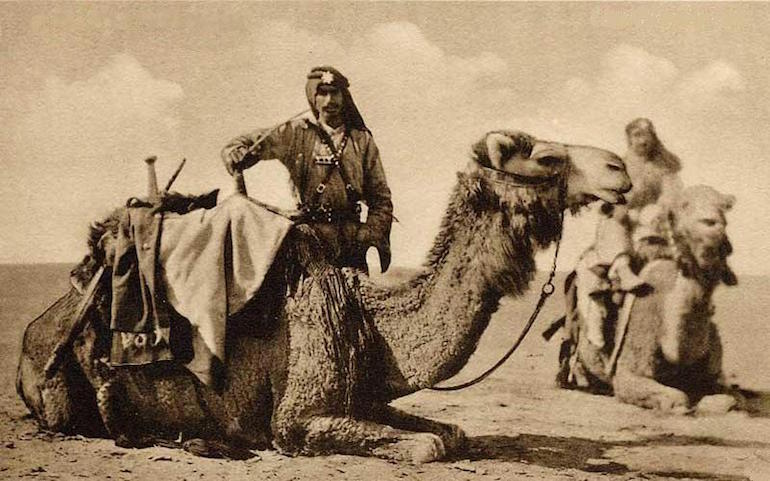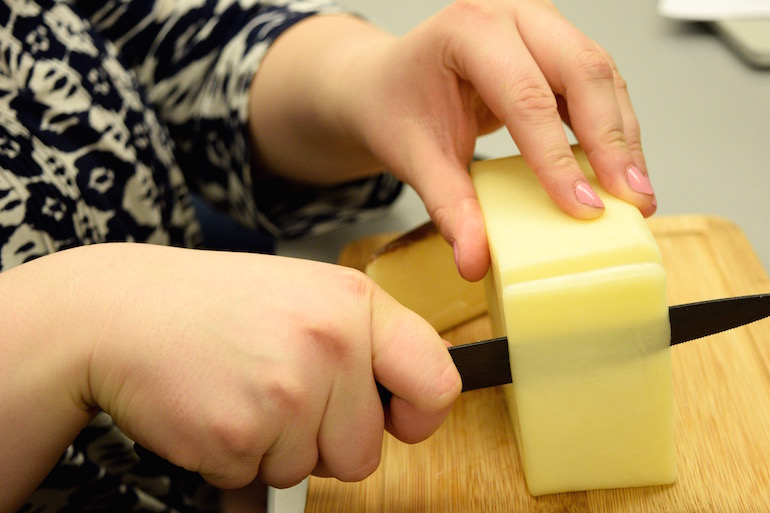Whether you’re cheese-obsessed or Wisconsin born, learning about the history of cheese is a must. But, quite honestly, it also doesn’t hurt to learn more if you’re lactose intolerant or absolutely hate the taste of it. Cheese surrounds us daily, and these random facts can help your next trivia night.
An Unknown Origin
Food historians have a difficult time pin-pointing the exact origin of cheese. But by making what teachers always refer to as an “educated guess,” the making of cheese dates back roughly 4,000 years ago. Food historians know that the origin of cheese and cheesemaking is closely related to the domestication of milk producing animals: primarily sheep, which began between 8,000 and 10,000 years ago.
No one knows who first made cheese either. Legend says that an Arabian merchant, who was setting out on a journey through the desert, put his supply of milk into a pouch made from a sheep’s stomach. The rennet in the lining of the pouch plus the heat from the sun caused the milk to separate into curd and whey, thus making cheese.

Photo Courtesy of the National Historic Cheesemaking Center
Other explanations, though not nearly as exciting, claim that the discovery of cheese stemmed from the practice of salting curdled milk for preservation or from adding fruit juices to milk which could have resulted in the curdling process.
Cheese Goes Global
Though we don’t know exactly where cheese originated, it’s believed that travelers from Asia brought the art of cheesemaking to Europe and the Romans introduced cheesemaking to England. And wherever cheese was introduced, it quickly became accepted as an established food.
By the time of Julius Caesar, hundreds of varieties of cheese were being produced and traded across the Roman Empire. But as cheesemaking flourished in Europe and the Middle East, North and South America were still completely void of it until it was introduced much later by European immigrants.
New World, Meet Cheese. Cheese, Meet The New World.
In 1620, as the Pilgrims set off towards America, cheese was included in their Mayflower supplies. Cheesemaking stayed as a local farm industry up until the 19th century when the first cheese factory was made in 1851 by Jesse Williams in Oneida County, New York.
During early American history, the colonies of Rhode Island, Connecticut, and Eastern Massachusetts were considered the nation’s dairymen. Then after the Revolutionary War, New York State succeeded New England as the largest producer of cheese. And for a period of 150 years, New York and Ohio contributed the bulk of cheese manufactured in the United States. Ohio was even nicknamed “Cheesedom” for over 50 years.

Photo by Linzie Gienau
But we all know that Wisconsin is the state most well-known for cheese and dairy today (…along with California). So how did cheesemaking travel to the midwest?
Wisconsin and Cheese: The Perfect Combo
As the demand for cheese increased and as the population grew, people moved westward. In 1850, foreign immigrants from Germany, Norway, and Switzerland arrived and started making communities in Wisconsin.
Swiss immigrants settled in Green County, Wisconsin during 1845. When they settled they began to manufacture foreign cheese for income. These immigrants had cheesemaking experience in the alps but realized the necessities for cheesemaking were nonexistent in the New World. They had no cows or milk, no implements to make cheese, and little to no money. It was a basket case to say the least.
But these early Americans persevered and managed to slowly save up money to buy cows. They used a common wash boiler for a kettle, hoops made of hickory or white oak splint, a gunny sack or piece of linen as a cheese cloth, a heavy beam filled with stone for a press, and bare hands were used to mix the cheese and act as a thermometer in the warming process.
Their extreme endurance and hardship eventually paid off because the cheese industry brought great economic wealth to Wisconsin. Dairy herds grew from internal growth and imports from Ohio and New York. Equipment was shipped in from Europe and the East or it was manufactured locally. Then in 1831, Wisconsin’s first farmstead cheese factory opened in Koshkonong.
By 1899, Wisconsin contained 1,500 cheese factories at rural crossroads where farmers would deliver their daily morning milk. It was the perfect place for this industry because of Wisconsin’s close proximity to the Great Lake and railroad. These means of transportation allowed for excellent routes which quickly expanded the market.
Cheese Today
Thanks to the hardships many early immigrants endured, the United States is still a huge producer of cheese today. And Wisconsin still embraces its very “cheesy” history.
Wisconsin today has more skilled and licensed cheesemaker than any other state. Currently, this state produces 25% of all domestic cheese in the United States.

